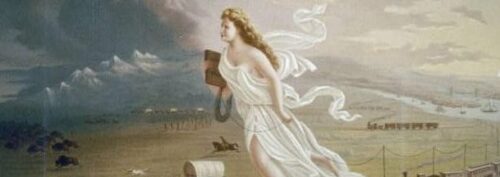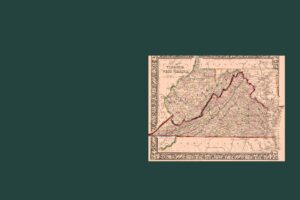
Was James K Polk a Great President? Considering the War with Mexico
In 1982, country music legend Merle Haggard performed for President Ronald Reagan, First Lady Nancy Reagan, and their guests at the Sierra Grande Ranch in the Santa Ynez Mountains three hours north of Los Angeles The audience, dressed in western attire, sat on bales of hay in an open-air arena decorated like a barn. They listened as Haggard played his classic ode to a by-gone era, “Okie from Muskogee,” then his more recent hit, “Rainbow Stew.” One verse of “Rainbow Stew” goes like this:
“When a president goes to the White House
Does what he says he’ll do,
We’ll all be drinking that free bubble-up and
Eating that rainbow stew.”
Judging by the song’s criteria, Ole Merle must think very highly of James K Polk, the one-term president from Tennessee, known as “Young Hickory.” According to historian George Bancroft, Polk’s first Secretary of the Navy, Polk had four goals upon entering the White House – though not all these goals made it into the campaign platform. First, he wanted to settle a boundary dispute with Great Britain over the Oregon Territory. Second, he wanted to reduce the tariff, a perennial concern of southerners. Third, he proposed restructuring the national treasury, and last, and arguably most intriguing, he wanted to acquire California from Mexico. Polk accomplished all four goals in his single term, which begs the question: Why isn’t James K Polk ranked higher in historians’ assessments of presidential greatness?
A quick Google search of presidential rankings shows Polk ranked twelfth best president in one poll and fourteenth in another. Not bad for a one-term president – Americans tend to rank presidents who won a second term higher than those who did not – but low when you consider his four-for-four winning streak. Plus, Polk would have made it five-for-five, but for the Tyler administration’s last-minute push to annex Texas into the Union – just days before Polk’s inauguration – which was a key plank in Polk’s campaign platform. What gives?
The answer may lie in modern-day American’s assessment of the Mexican-American War orchestrated by Polk. Controversial at the time, the war with Mexico now appears to many Americans as a naked land-grab disguised as a conflict of honor. They see the war as an example of American Imperialism. They recognize that “like all empires, the American one required conscious deliberation and energetic government action to bring it into being, to deal with previous occupants and competing claims to ownership. Power politics, diplomacy, and war proved as much a part of America’s “manifest destiny” as covered wagons.” (Daniel Walker Howe, What Hath God Wrought, p 707)
To the modern eye, Polk’s moves seem Machiavellian. When the United States annexed Texas, they accepted Texas’s claim that its border with Mexico was the Rio Grande. Mexico denied that claim, instead insisting the border was the Nueces River, approximately 150 miles north of the Rio Grande. Mexico rebuffed U.S. efforts to purchase California, so Polk ordered American troops to enter the disputed territory in Texas. When the inevitable clash occurred with Mexican forces, he asked Congress for a declaration of war, claiming that “Mexico has passed the boundary of the United States, has invaded our territory and shed American blood upon the American soil.” (Document A)
Among the many Americans challenging the veracity of this claim was a one-term Congressman from Illinois, Abraham Lincoln. In a series of resolutions, Lincoln dared Polk to point to the exact spot where American blood was shed. Other Whigs, such as Henry Clay, also opposed Polk’s request for a war resolution. Polk’s Democratic supporters in Congress outmaneuvered them by linking the war resolution to a military appropriations bill. Whig war opponents could not vote against the war without appearing to vote against supporting the troops – a perception American politicians strive to avoid.
The outcome of the War with Mexico had significant implications for nineteenth-century Americans. In the treaty ending the war, Mexico ceded an enormous amount of land to the United States, including all of California, the vast majority of modern-day New Mexico and Arizona, and parts of Colorado, Nevada, and Utah. At the time, some Americans saw this as further proof of the nation’s Manifest Destiny – the concept that Americans – and American institutions – were destined to rule North America. Now, many Americans see Manifest Destiny as a subterfuge for taking land from Native Americans for the benefit of white settlers.
The war and its aftermath also fueled the growing sectionalism in the country. Some opponents viewed the war’s real purpose as supporting southern slaveowners’ desire to spread slavery into new territory. After the war, anti-slavery advocates backed what came to be known as Wilmot’s Proviso – a proposal blocking slavery in any land acquired from Mexico, first proffered by Pennsylvania Congressman David Wilmot. Wilmot’s Proviso was repeatedly introduced in Congress, which kept the issue of Congressional authority to regulate slavery in the territories on the front burner.
The list of young U.S. Army officers who served in the Mexican War reads like a Who’s Who of Civil War Generals – led by Ulysses S. Grant and Robert E. Lee. Lieutenants James Longstreet and Winfield Scott Hancock fought together in the battle of Churubusco before leading Confederate troops against Union troops, respectively, on the third climatic day at Gettysburg. Future Confederate generals P.G.T. Beauregard, Joe Johnston, and Braxton Bragg fought for the United States in Mexico but against their fellow Mexican War veterans George H. Thomas, Joseph Hooker, and George G. Meade in the Civil War. Undoubtedly, their experiences in the Mexican-American war contributed to the effectiveness of the troops they led in battle less than twenty years later.
Unlike some historians, students enjoy playing the what-if game. The war with Mexico raises numerous what-ifs. What if the war had not happened – would California be a part of the U.S. or a separate nation? Would Arizona and New Mexico be part of the U.S.? Did the combat experience the U.S. military gain in Mexico make the Civil War more or less bloody? And the most crucial speculative question of all – what about slavery? Suppose the U.S. had recognized Mexico’s border claims and avoided war. Would slavery been more or less likely to spread? In his book, Freedom National: The Destruction of Slavery in the United States, 1861-1865, historian James Oakes describes one abolitionist strategy for ending slavery peacefully. -the creation of a “cordon of freedom” around the slaveholding states – on the high seas, in free territories and the District of Columbia. Abolitionists predicted this strategy would act like a chokehold on the slave-holding South – forcing it to abandon slavery. Would this strategy work in the absence of the Mexican War and the political pressure to create more states – either slave states or free states – from the territory gained from the Mexican Cession?
Access the full Documents and Debates chapter, with audio recordings of the documents, here.
The documents in Chapter 13 of Teaching American History’s Documents and Debates, Volume 1 provide students with the opportunity to find their own answers to these questions by examining the words of those asking them at the time the events occurred. Documents in this chapter include:
A. President James K. Polk, “Special Message to Congress on Mexican Relations,” May 11, 1846
B. Representative Abraham Lincoln, Spot Resolutions, December 12, 1846
C. Thomas N. Lord, Cause, Character and Consequences of the War with Mexico, 1847.
D. Great Speech of Clay, Cartoon, 1847
E. Representative Andrew Kennedy, Speech on the Mexican War, December 16, 1846
F. Ulysses S. Grant, Recollections of the War, 1885
We have also provided audio recordings of the chapter’s Introduction, Documents, and Study Questions. These recordings support literacy development for struggling readers and the comprehension of challenging text for all students.
Teaching American History’s We the Teachers blog will feature chapters from our two-volume Documents and Debates with their accompanying audio recordings each month until recordings of all 29 chapters are complete. In today’s post, we feature Volume I, Chapter 13: The War with Mexico. On June 23 we will highlight Chapter 27: The Equal Rights Amendment from Volume II of Documents and Debates in American History. We invite you to follow this blog closely, so you will be able to take advantage of this new feature as the recordings become available.


